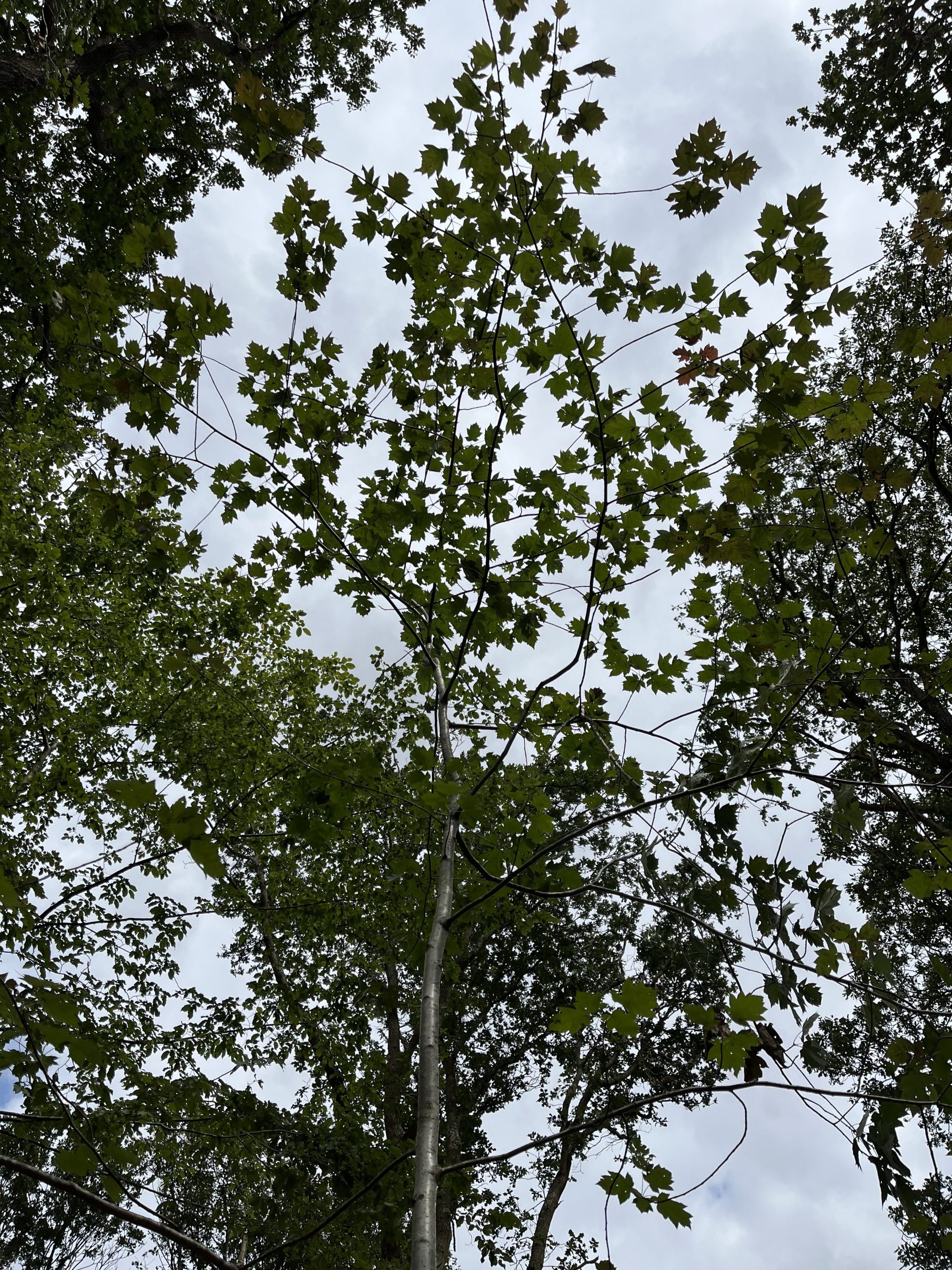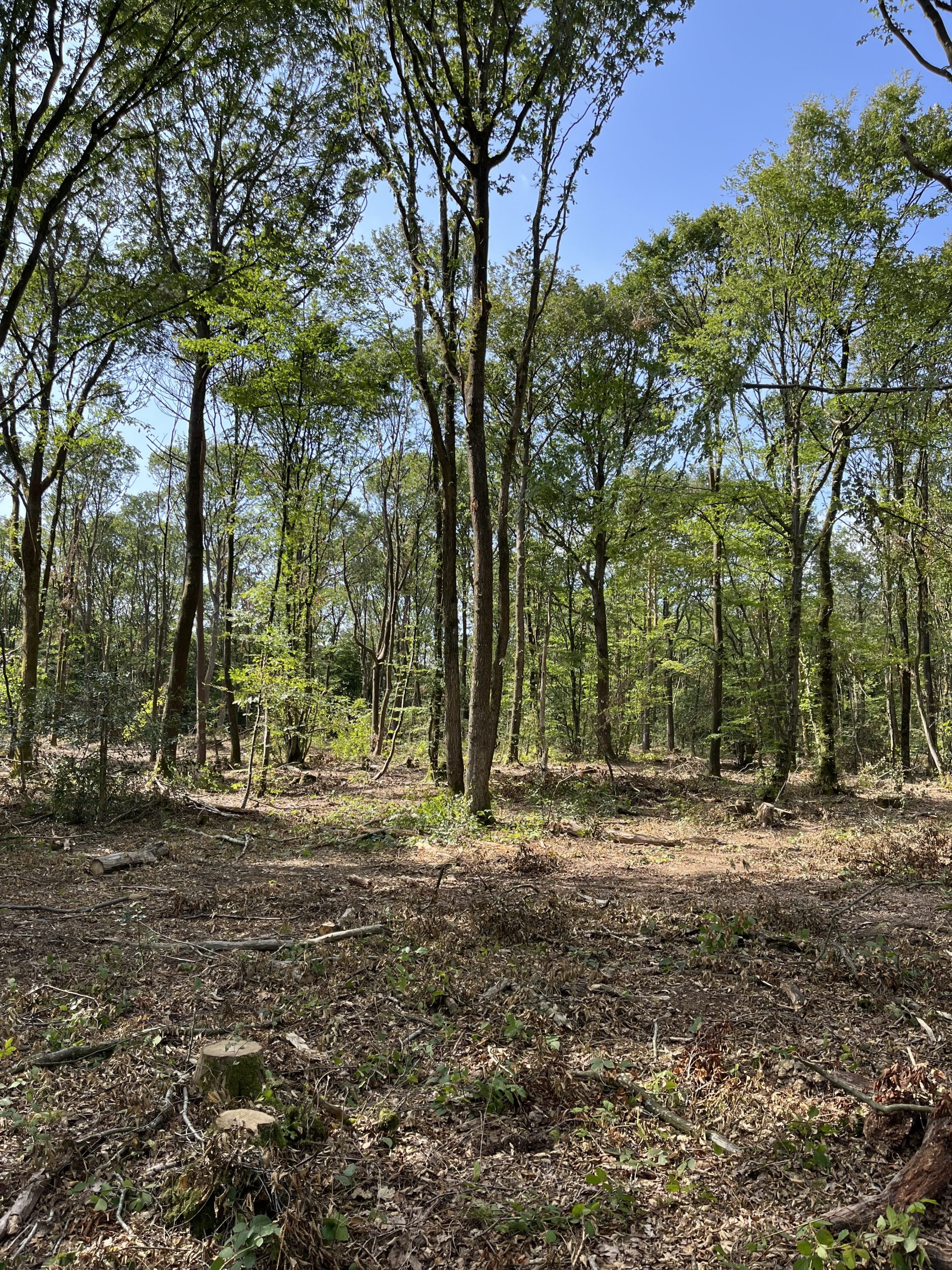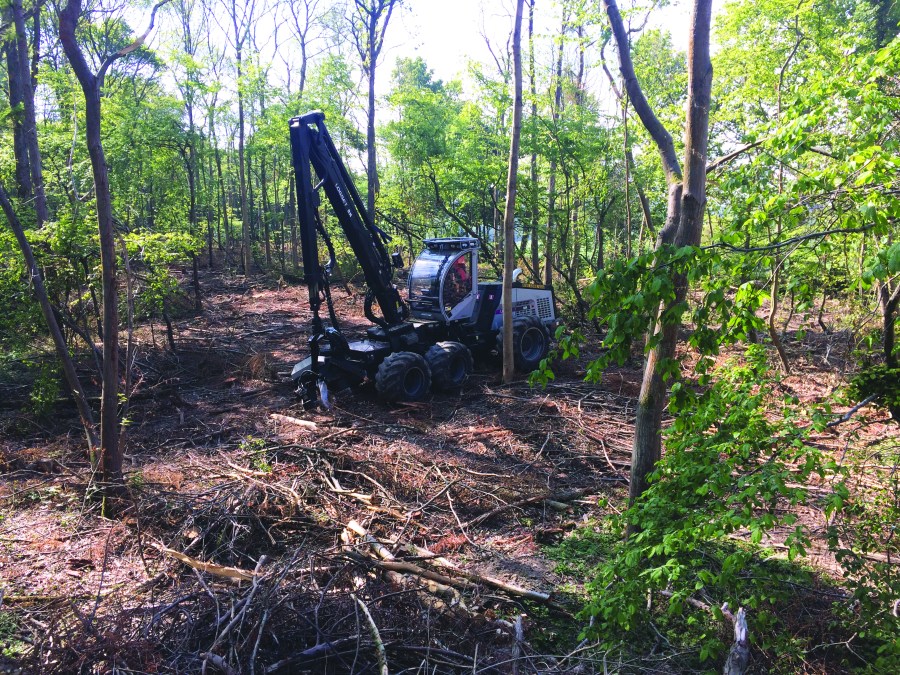Forestry may be a business for Jon Davies and Dave Holmes, but it is also their passion.
It’s a passion that can benefit not just the environment but the bottom line of businesses that have a significant area of woodland as part of their holding.
For vineyards that welcome visitors as part of a multi-faceted business plan, their well-respected business, South East Forestry, can open up woodland walks to provide an additional attraction and encourage more potential buyers to spend time on site.
“Larger vineyards are increasingly incorporating a café or restaurant and wine sales into their offering, and for those that are set in an attractive wooded landscape, it makes sense to make the most of that landscape,” explained Jon.
South East Forestry manages woodland to benefit the environment, allow new plants and insects to thrive and encourage healthy trees to achieve their full potential.
The team recently carried out a project for Mike Bax, long-standing director and now consultant with Challock, Kent-based BTF Partnership, someone Jon described as being “totally on the same page” with regard to the environmental benefits of well-managed woodland.
Alongside his professional work with BTF Partnership, Mike and wife Jan own 100 acres of species-rich grassland and 160 acres of woodland, all in higher-tier countryside stewardship schemes, at Moat Farm, Shadoxhurst.
As a self-confessed ‘tree geek’, nature enthusiast and bird lover, Mike turned to South East Forestry when he decided it was time to tackle an area of his own woodland that needed more than just a coppicing operation.
“We had five acres that desperately needed thinning as the high forest was shading the woodland floor completely,” he recalled. ‘There was no under storey or ground cover and my wife Jan and I knew that that wasn’t good for the trees or for the plant, insect or bird life.”
They soon discovered that Jon was right on their wavelength. “Some people think that by shutting the gates on an area of woodland and leaving it to do its thing, they are somehow helping the environment, but they really aren’t,” he commented. “Woodland has been managed throughout the centuries, and a tangle of dead and dying trees shutting out the daylight and preventing anything else from growing isn’t the eco-friendly move they think it is.”
Mike was particularly keen to improve the woodland to support rare bird life including nightingales and nightjars, both of which breed in the area but which need a healthy under storey with good ground cover. “They need a coppice rotation, which gives them the ideal breeding conditions from year three or four through to about year ten,” he pointed out.
Mike was also keen to protect and enhance the setting of 31 wild service – or chequer – trees that he found languishing in the overstood and tangled woodland. The trees are relatively rare countrywide and are an important relic of the old Wealden forest landscape.
South East Forestry’s approach to forestry is to work with the landowner to create a healthy, revitalised woodland, deliver the best value to the client and divert as much timber as possible to high-end, long-term uses.
“Using as much timber as we can for construction and furniture making not only increases the value to the landowner but keeps the carbon locked up,” he explained. “Suitable lower grade timber can be used for fencing, with firewood very much the last option.”
At Moat Farm, “every last ounce” of the harvested wood was put to good use, with the low grade thinnings stacked to provide a future source of biofuel for four houses and other building on the estate. Mature oak was taken back to South East Forestry’s own sawmill at Hawkhurst with a view to finding a long-term use for the timber, and the coppiced timber will have a new life as fencing.
Jon’s first step when asked to work, coppice or improve woodland is to walk the area with the landowner and create a management plan. “Jon came to see me in the spring and had a thorough look around,” Mike recalled. “He talked sensibly about what should be done and how he could sensitively improve these semi-natural ancient woodlands.
“We discussed the need to create better habitats for the nightingales, let daylight onto the forest floor to allow more plants and insects to thrive, clear space for the wild service trees and generally create a more open, living, woodland environment.”
The wild service trees were marked up and avoided by the highly skilled harvesting and forwarding machine operators, while Jon also handled all the paperwork, liaising with the Forestry Commission and obtaining the necessary licences.
“One of the wild service trees featured in The Queen’s Green Canopy, a book which depicted 70 ancient woodlands that was commissioned by Prince Charles to mark Her Majesty The Queen’s Platinum Jubilee, so you can understand how important it was to choose the right person to do this work,” commented Mike.
“In the event Jon and his team did everything they said they would and the work exceeded my expectations by a considerable way. They did a great job and the wood looks ten times better today than it did before.”

Before thinning

Chequer under the canopy


Thinned woodland after harvesting

Chequer under the canopy
For more like this, sign up for the FREE Vineyard newsletter here and receive all the latest viticulture news, reviews and insight




